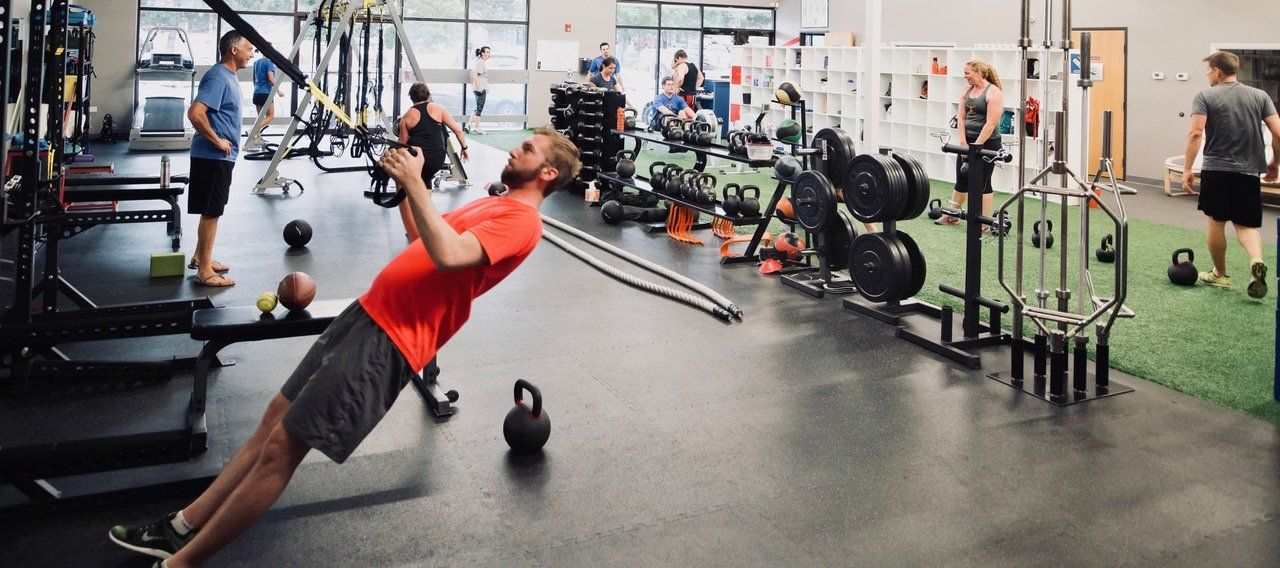Functional Training vs. Traditional Strength Training: What’s the Difference?
What’s the Difference between Functional Training and Traditional Strength Training?
For many of us, life is hectic and it’s tough to schedule time for the gym. To get the biggest bang for your buck, it’s helpful to know the difference between traditional strength training and functional training, so you can make the best decision for your needs and goals. Not sure what these terms mean? Here, we explain the fundamental differences.
What qualifies as “traditional” strength training?
You may have an idea in your mind what “traditional” strength training is, but really there’s no such thing as “traditional.” There are, however, several different types of training that come to mind that may qualify as traditional. What’s right for you depends on your current fitness state and your goals.
When you think of strength training in general, here is what comes to mind for most people:
- Bodybuilding and physique training: This type of training focuses almost exclusively on building a certain type of aesthetic – in other words, to get huge. While you will certainly work specific muscles to fatigue, this doesn’t necessarily mean that they’ll be useful in daily life. Big does not necessarily equate to useful.
- Machine and/or circuit training: You’ve seen the rows and rows of machines in the big gyms. They are elaborate devices designed to isolate individual muscles and can be useful for bodybuilding, physical therapy, or for the novice weightlifter. The problem is, with the exception of bodybuilding, they have very limited usefulness. Each individual machine is designed to work a specific muscle in isolation but your muscles don’t work like that in real life. For example, seated knee extensions won’t help you run faster or carry heavy things since those activities require a synchronized recruitment of dozens of other muscles. Those rows and rows of machines look pretty cool and help big gyms sell a lot of memberships at the beginning of the new year, but most memberships go totally unused.
- Power lifting: Power lifting and its cousin Olympic lifting are actually two different weightlifting sports where the competitors try to out-lift each other in a small number of different barbell exercises. There’s no question that these specialized lifters are strong powerful athletes. Many of the individual exercises make their way into a functional training program. However, power lifting exclusively does not have any specific carryover into general sports performance or every day life. And it is certainly not the best option for the beginner to intermediate exerciser who’s primarily interested in improving their general fitness level.
If the above sounds familiar but doesn’t sound appealing or achievable, you’re not alone. Luckily, the methods that we think of as “traditional” aren’t the only (or most effective) ways to improve your health.
Take a look at functional training, and why this form of exercise has a better chance of fitting in perfectly with your unique situation.
What is functional training?
Functional Training is a comprehensive strength training program that directly contributes to improved activities of daily living and athletic pursuits. We’ve covered a few of the reasons why “traditional” strength training isn’t ideal for all life circumstances. That’s where functional training comes in. The following points will demonstrate why this method may be a great fit for your busy lifestyle and personal situation:
- Functional training is a total-body, comprehensive approach to fitness that will truly make a difference in your daily life.
- Functional training begins with establishing your individual baseline competency and then progresses from there. In other words, we start where you are, compare it to where you want to go, and then design the program that’s right for you.
- Nerd Alert: All movements can be categorized as either locomotive, manipulative, or striking. Locomotive movements include walking, running, jumping, climbing and swimming. Manipulative movements include lifting, carrying, and throwing. Striking movements include swinging things like golf clubs, bats, or rackets. Striking also includes hammering nails, combative sports like judo, or wrestling for sport or with your kids. Functional training enhances all of these.
- Functional training utilizes a wide variety of training methods and tools that include barbells, kettlebells, dumbbells, TRX, resistance tubes and bands, cables, medicine balls, sandbags and so much more. Some tools are better at some things than others. And sometimes, the point of the variety is variety itself.
- Your coach or personal trainer will direct you through a balanced variety of exercises that will get you progressively healthier, stronger, and more agile so you’re never missing anything or going down a path that can lead to injuries or overuse problems.
- And it’s never boring! By bringing purpose and applicability to your training, you’ll quickly notice a difference in your energy, endurance, and flexibility. Functional training is meant to improve everyday life and your performance at the sports you love. As you continue to work toward your goals, you’ll also realize that activities of daily living – like carrying heavy things or bounding up the stairs at work or at Red Rocks – get much easier.
If functional training sounds a lot better than chugging away on a treadmill, give us 30 days to show you how it’s done. Click on the Sign Up button and choose the 30 Day Trial Membership to experience everything we do for a month. We bet you’ll be super happy you did.
Our facility is conveniently located on the northwest corner of Denver in Wheat Ridge.
You might also enjoy these posts . . .








